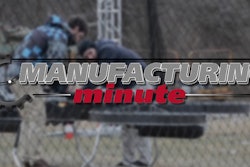E-commerce continues shaking up the industrial market, which has been undergoing a rapid revolution since the financial crisis ended and consumers — and businesses — got back to spending. Simon Bhadra, a senior marketing manager for industrial distributors segment at UPS, has spent 25 years analyzing the industrial space. Industrial Distribution chatted with Bhadra to get his ideas on current and future industry trends. Check out what he had to say about the major market factors going forward.
Industrial Distribution: What big themes are you keeping an eye on?
Bhadra: M&A. Borrowing money is still a bargain in historical terms and businesses are hunting for complementary services and business that will help them grow on the web. Keep an eye on mid-tier-to-large distributors, who will be gobbling smaller players with increasing intensity. Companies understand that speed and accuracy are paramount to today’s consumers. You can’t sell and say things will get there in a few weeks. Even if rates rise, that won’t slow things down.
ID: Is there room for e-commerce to continue its rapid growth?
Bhadra: Most definitely. If you can buy it in a store, chances are you can get it online easier and, in some cases, faster. It used to be that shoppers turned to the web for books. Then came small-ticket items and consumables. Now, we’re seeing equipment and big-ticket items. You can get a mattress delivered to your door. You can buy a car entirely online. That might have seemed like science fiction years ago.
Online shopping habits are influencing consumers’ behavior for buying B2B products online. B2B e-commerce makes M&A integration much easier than in the old days when there were paper catalogs. Products from an acquired company and be seamlessly integrated into the acquiring company’s product portfolio in days. Watch this area closely.
ID: What technology has piqued your interest?
Bhadra: Anything that improves efficiency and improves customer service is in highly in demand. I’m particularly excited about smart bins. Think about it: In today’s technological age, no thirsty consumer needs to stand before a soda machine and see their favorite drink out of stock. In the B2B world, smart bins sense the number of parts in a bin and trigger an alert to the distributor to restock when parts levels reach a minimum threshold. In the age of brittle supply chains, stocks can create a ripple in the production process or even shut a line down. This helps businesses make more money while keeping consumers happy. It is a win-win.
ID: What group of buyers are driving the most change?
Bhadra: Millennials, without a doubt. They’re a large cohort that is rising in importance as Baby Boomers begin to retire and pinch pennies for later in life. Millennials have grown up with technology as the norm. There’s nothing they won’t do online! They don’t have a problem going to a distributor’s website and buying something without seeing or touching it first. They aren’t particularly loyal and will skip to a better site in the blink of an eye, which means that companies have to offer premium service and a superior e-commerce experience. They are also more apt to buy directly from a manufacturer or from an e-market place if the distributor can satisfy their need.






















